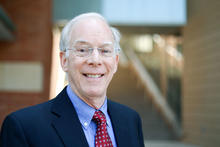 NREL/MINES/NIST Materials Science Distinguished Lecture Series
NREL/MINES/NIST Materials Science Distinguished Lecture Series

Bruce Dunn - Department of Materials Science and Engineering University of California, Los Angeles
4 p.m. Tuesday, October 9, Coolbaugh 209 • 5 p.m. reception, Coolbaugh Atrium
ABSTRACT
The prospect of developing materials with the energy density of batteries and the power density and cycle life of electrical double-layer capacitors (EDLCs, also known as supercapacitors) is an exciting direction that has yet to be realized. With these materials there is the promise of achieving charging in minutes (much faster than batteries) with charge storage levels comparable to battery electrode materials (much higher than EDLCs). In recent years there has been widespread interest in pseudocapacitance, a faradaic process involving surface or near-surface redox reactions, that can lead to high energy density at high charge-discharge rates. This paper will review our work on identifying Li+ conducting materials which exhibit pseudocapacitive behavior. Our research on Li+ insertion in Nb2O5 has established a basis for intercalation pseudocapacitance in which the rate of charge storage is determined by surface-like kinetics rather than semi-infinite diffusion as occurs with battery materials. Another key feature with this mechanism is that the structure does not undergo a phase transformation upon Li+ insertion. In addition, when materials are reduced to nanoscale dimensions, they may begin to exhibit pseudocapacitive characteristics because of the large number of surface sites or because phase transitions are suppressed. In research to date, we have identified several electrode materials that retain high capacity for lithium at charging rates of 1 to 2 minutes. These results indicate our improved understanding of the electrochemical and structural characteristics that lead to materials and devices that exhibit both high energy density and high power density.
Sponsors
National Renewable Energy Laboratory
Colorado School of Mines
National Institute of Standards and Technology

